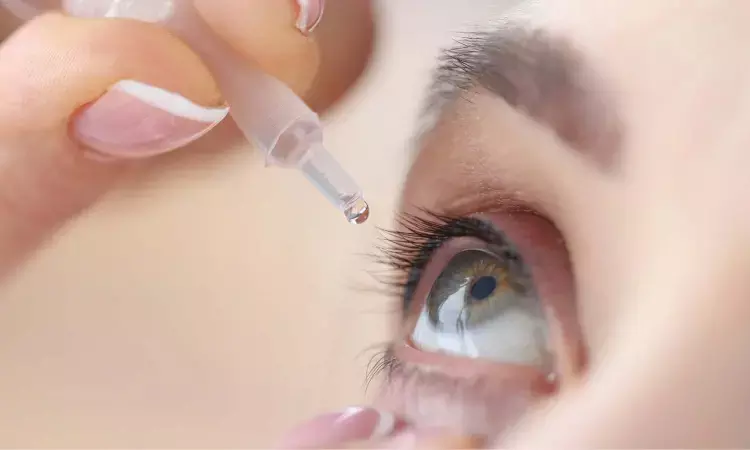- Home
- Medical news & Guidelines
- Anesthesiology
- Cardiology and CTVS
- Critical Care
- Dentistry
- Dermatology
- Diabetes and Endocrinology
- ENT
- Gastroenterology
- Medicine
- Nephrology
- Neurology
- Obstretics-Gynaecology
- Oncology
- Ophthalmology
- Orthopaedics
- Pediatrics-Neonatology
- Psychiatry
- Pulmonology
- Radiology
- Surgery
- Urology
- Laboratory Medicine
- Diet
- Nursing
- Paramedical
- Physiotherapy
- Health news
- Fact Check
- Bone Health Fact Check
- Brain Health Fact Check
- Cancer Related Fact Check
- Child Care Fact Check
- Dental and oral health fact check
- Diabetes and metabolic health fact check
- Diet and Nutrition Fact Check
- Eye and ENT Care Fact Check
- Fitness fact check
- Gut health fact check
- Heart health fact check
- Kidney health fact check
- Medical education fact check
- Men's health fact check
- Respiratory fact check
- Skin and hair care fact check
- Vaccine and Immunization fact check
- Women's health fact check
- AYUSH
- State News
- Andaman and Nicobar Islands
- Andhra Pradesh
- Arunachal Pradesh
- Assam
- Bihar
- Chandigarh
- Chattisgarh
- Dadra and Nagar Haveli
- Daman and Diu
- Delhi
- Goa
- Gujarat
- Haryana
- Himachal Pradesh
- Jammu & Kashmir
- Jharkhand
- Karnataka
- Kerala
- Ladakh
- Lakshadweep
- Madhya Pradesh
- Maharashtra
- Manipur
- Meghalaya
- Mizoram
- Nagaland
- Odisha
- Puducherry
- Punjab
- Rajasthan
- Sikkim
- Tamil Nadu
- Telangana
- Tripura
- Uttar Pradesh
- Uttrakhand
- West Bengal
- Medical Education
- Industry
FDA approves first treatment of Demodex blepharitis

USA: The Food and drug administration has approved lotilaner ophthalmic solution 0.25% (Xdemvy) as the first specific treatment for Demodex blepharitis.
In Demodex blepharitis Demodex mites invade and reside in hair follicles of the eyelashes and subsequently cause eyelid inflammation.
“We are thrilled to announce the FDA approval of XDEMVY for the treatment of Demodex blepharitis and look forward to making this product broadly available to the millions of patients who have not had any FDA-approved therapeutics for this disease,” said Bobak Azamian, MD, PhD, Chief Executive Officer and Chairman of Tarsus. “This tremendous milestone was achieved through a successful collaboration of our talented Tarsus team, countless eye care providers and the hundreds of patients who participated in our trials. We are grateful and honoured for the opportunity to introduce the first and only approved therapeutic for this disease to the eye care community.”
The FDA approval is based on results from two randomized, multicenter, double-masked, vehicle-controlled studies (Saturn-1 and Saturn-2), designed to evaluate the safety and efficacy of XDEMVY in 833 patients, 415 of which received XDEMVY. Patients with Demodex blepharitis were randomized to either XDEMVY or vehicle at a 1:1 ratio and dosed twice daily in each eye over the course of 6 weeks.
Efficacy was demonstrated by a significant improvement in eyelids (reduction of collarettes, the pathognomonic sign of the disease, to no more than 2 collarettes per upper lid) in each study by Day 43, with some patients seeing improvement as early as 2 weeks. Additionally, the endpoints of mite eradication (mite density of 0 mites per lash) and erythema cure (Grade 0) showed statistically significant improvement at Day 43 across both studies. In clinical trials, XDEMVY was generally safe and well tolerated. The most common ocular adverse reactions observed in the studies were instillation site stinging and burning which was reported in 10% of patients. Other ocular adverse reactions reported in less than 2% of patients were chalazion/hordeolum (stye) and punctate keratitis.
“After years of seeing Demodex blepharitis in my practice without an effective way to target the root cause of the disease, I’m so pleased to have a new treatment to offer my patients,” said Christopher Starr, MD, Associate Professor of Ophthalmology, Director of Refractive Surgery, Ophthalmic Education and the Cornea Fellowship Program at Weill Cornell Medicine, New York Presbyterian Hospital. “Demodex blepharitis, easily diagnosed by the presence of eyelash collarettes, can result in ocular damage in multiple ways, including irritation, eyelash distention or loss and inflammation, which can be uncomfortable for patients. This new medicine is a positive step forward for the treatment of this disease in many patients who have been struggling for years.”
“More than half of the patients in my practice present with Demodex blepharitis, and to date, we’ve not had any FDA approved therapies to treat the disease,” said Selina McGee, OD, FAAO, BeSpoke Vision. “Many patients have experienced redness, crusting and overall ocular discomfort for years and I am excited to finally be able to offer an FDA-approved treatment for my patients.”
Demodex blepharitis impacts approximately 25 million eye care patients in the U.S.-or 1 out of every 12 adults. It is a common yet often misdiagnosed or underdiagnosed eyelid disease that is caused by an infestation of Demodex mites, the most common ectoparasite found on human skin. Demodex blepharitis is characterized by redness, inflammation, missing or misdirected eyelashes, horizontal itching along the eyelid base and the presence of collarettes. Collarettes are cylindrical, waxy debris of mite waste products and eggs found at the base of the eyelashes.
Dr Kamal Kant Kohli-MBBS, DTCD- a chest specialist with more than 30 years of practice and a flair for writing clinical articles, Dr Kamal Kant Kohli joined Medical Dialogues as a Chief Editor of Medical News. Besides writing articles, as an editor, he proofreads and verifies all the medical content published on Medical Dialogues including those coming from journals, studies,medical conferences,guidelines etc. Email: drkohli@medicaldialogues.in. Contact no. 011-43720751


